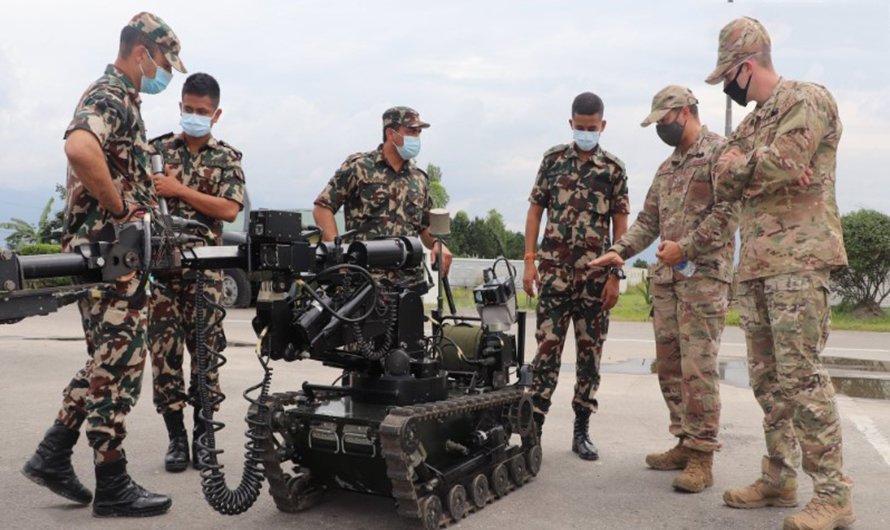
The Nepali Army (NA) and China’s People’s Liberation Army (PLA) concluded the “Fifth Nepal–China Sagarmatha Friendship Joint Military Exercise” in Nepal this September. The 10-day drill, inaugurated on 7 September in Kathmandu, focused on counter-terrorism, urban block drills, disaster management, infiltration, armed rescue, and high-altitude operations. Approximately 150 soldiers from each side participated.
The joint military exercise, conducted by the NA and PLA, began in 2017 with the approval of both governments. According to the NA, the exercise aims to share experiences and best practices in counter-terrorism, disaster management and humanitarian assistance, high-altitude operations, UN peacekeeping, and related tasks. The two militaries alternate hosting: the second edition was held in Chengdu, China (2018), and the third in Nepal (2019). The fourth was suspended due to COVID-19, and the series resumed in 2024 in Chongqing, China.
Dr. Purna Bahadur Silwal, a retired major general and author of Nepal’s Instability Conundrum: Navigating Political, Military, Economic and Diplomatic Landscape, said joint military exercises are meant to enhance interoperability so that two forces can execute specific operations together. He noted that the NA conducts such drills for humanitarian disaster response and UN peace operations. “It helps us understand and communicate with each other, enhance the ability to work together for a common purpose, and cooperate for peace and stability. Military-to-military cooperation also helps reinforce state-to-state relations,” he added.
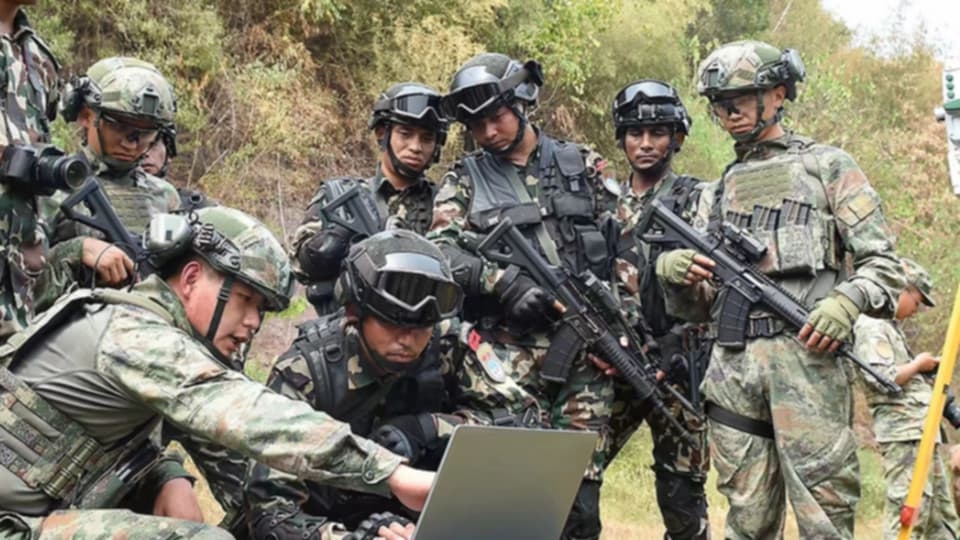
The NA also participates in joint training and exercises with the armed forces of the United States, the United Kingdom, India, China, Bangladesh, Pakistan, Sri Lanka, Mongolia, Indonesia, and others. These engagements focus on search and rescue, disaster response, counter-terrorism, mountain climbing, and United Nations peacekeeping.
With India, the NA recently completed the 18th Nepal–India Surya Kiran joint exercise, held from 31 December 2024 to 13 January 2025 in Saljhandi, Rupandehi, Nepal. The drill aims to deepen ties by sharing experiences in counter-terrorism and counter-insurgency, jungle warfare, humanitarian assistance and disaster relief, and operations in challenging terrain. Launched in 2011, Surya Kiran alternates annually between the two countries and is designed to strengthen bilateral relations through enhanced defence cooperation.
Similarly, the joint training exercise between the NA and the U.S. Army is called Ex-Balance Nail. The 41st edition was held from 7 February to 7 March 2024. The two armies have conducted this exercise since 2004. During the 41st iteration, 46 security personnel participated—36 from the NA and 10 from the U.S. Army. According to the NA, the exercise focused on disaster management, search and rescue, humanitarian assistance, and related activities.
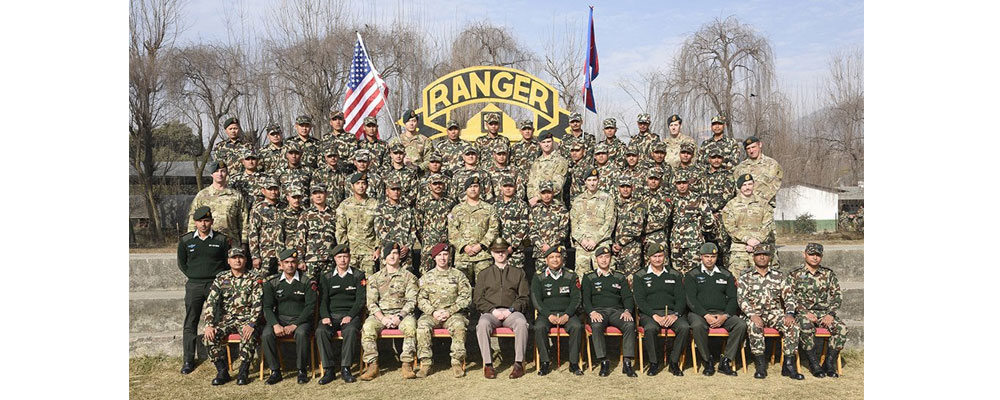
Major General Binoj Basnyat (Retd.), a geopolitical analyst, noted that for small states like Nepal, joint exercises and strategic partnerships are less about preparing for war and more about diplomacy, balance, and survival in a complex neighbourhood. Nestled between India and China, Nepal uses these engagements to hedge between the two powers, maintaining room to manoeuvre and avoiding overdependence on either side. “Exercises build trust, enhance confidence, and create institutional channels that reduce misperceptions in crises. They also provide exposure to modern doctrines, counter-terrorism, peacekeeping, and disaster relief—capabilities Nepal cannot develop on its own,” he said.
For Nepal, a major UN peacekeeping contributor, these exercises bolster credibility and professionalism. Just as importantly, they carry diplomatic weight: military diplomacy complements political ties and provides leverage in negotiations on trade, aid, and infrastructure.
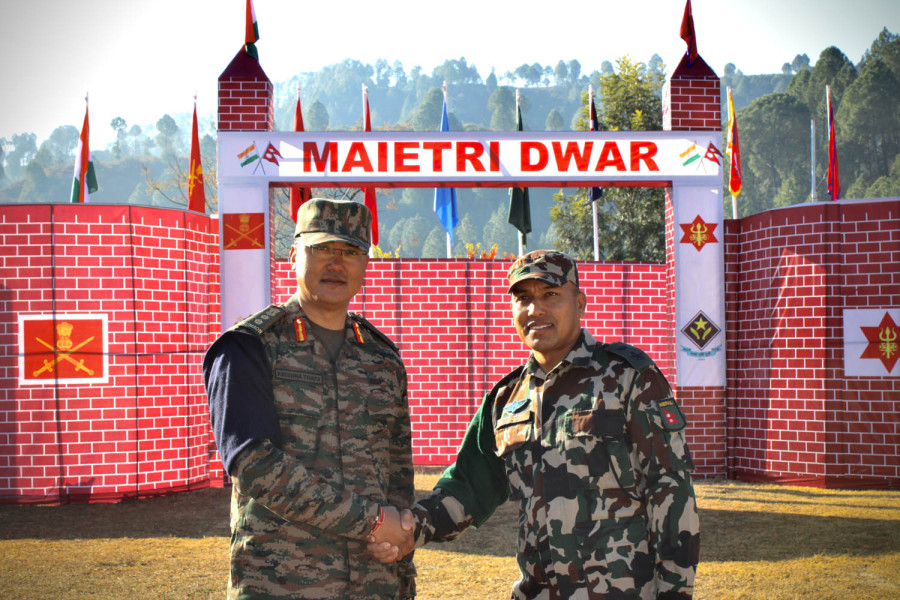
In disaster-prone Nepal, humanitarian cooperation is especially relevant. “Ultimately, joint military exercises are tools of statecraft, reinforcing Nepal’s neutrality, enhancing capacity, and projecting its role as a bridge in South Asia’s shifting geopolitics,” Basnyat said.
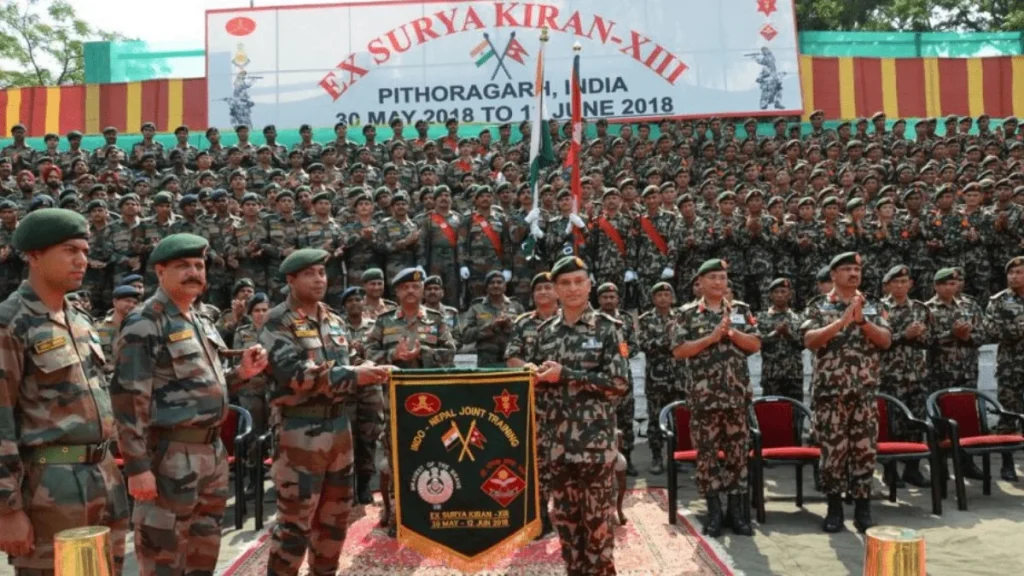
Military cooperation is a cornerstone of defence diplomacy. It helps the NA build trust and transparency with foreign militaries while reducing suspicion in a sensitive neighbourhood between India and China. Such engagements strengthen professional capacity by exposing Nepali troops to modern doctrines, technologies, and operational practices. They also prioritise peacekeeping, humanitarian assistance, and disaster relief—areas in which Nepal is globally recognised—thereby enhancing its international credibility. Basnyat summed it up: “Beyond military benefits, these exercises function as diplomatic tools, giving Nepal leverage in regional politics and reinforcing its image as a neutral, responsible actor committed to cooperation and stability.”